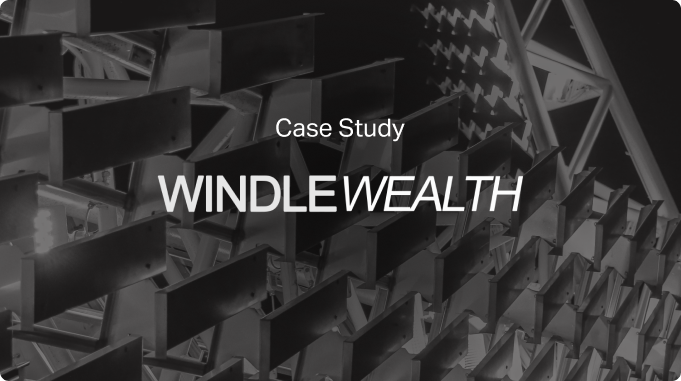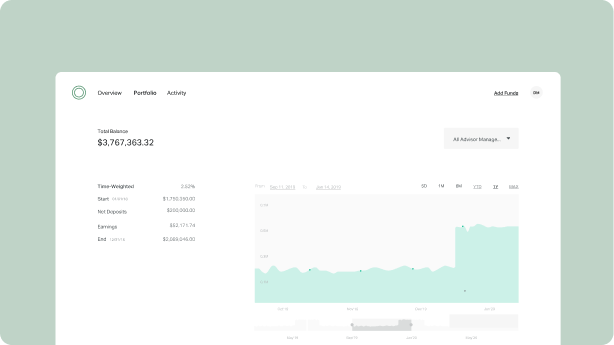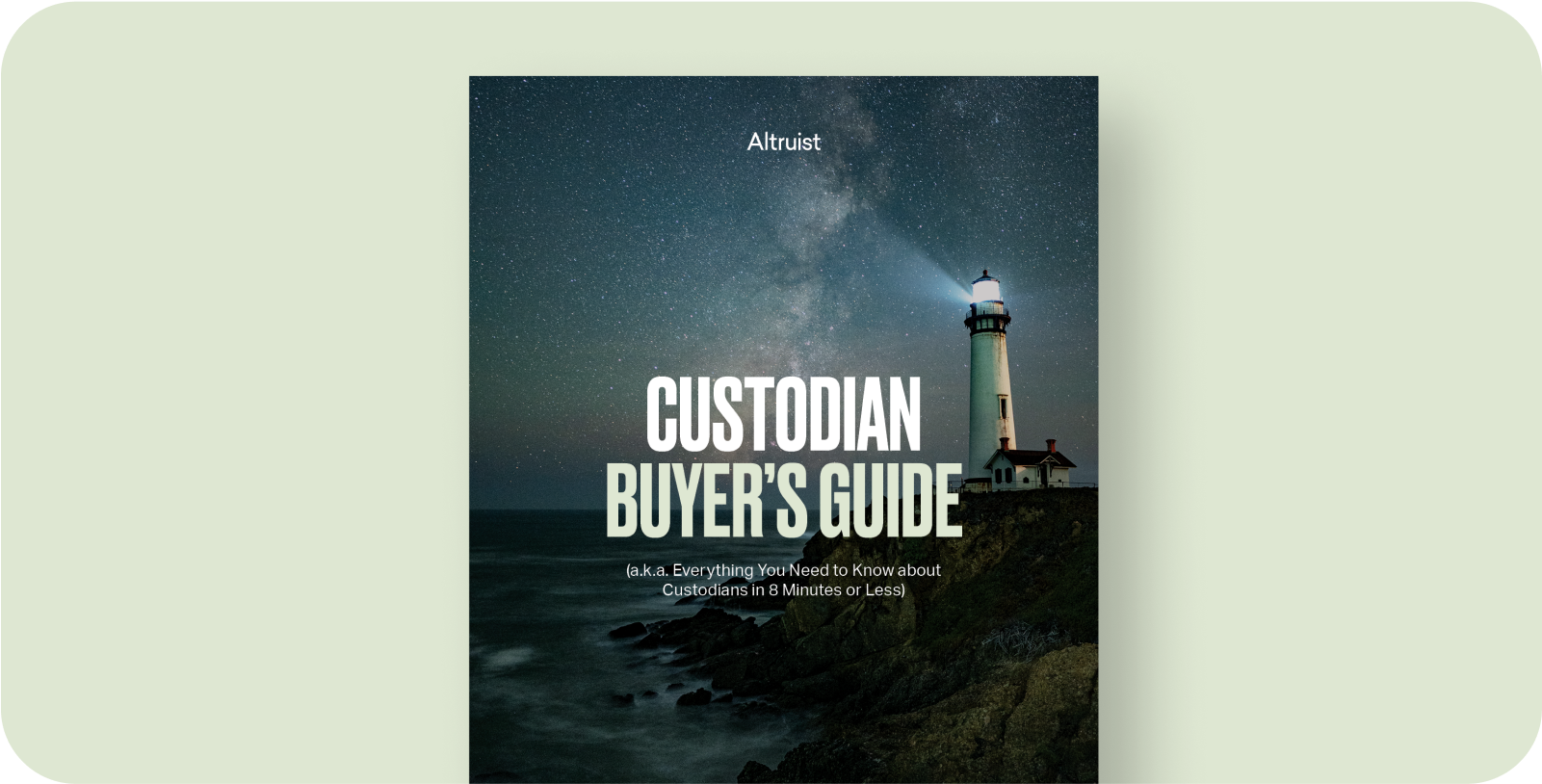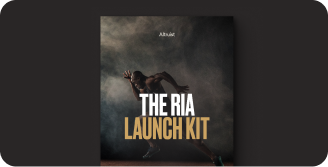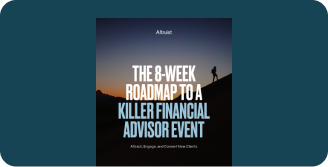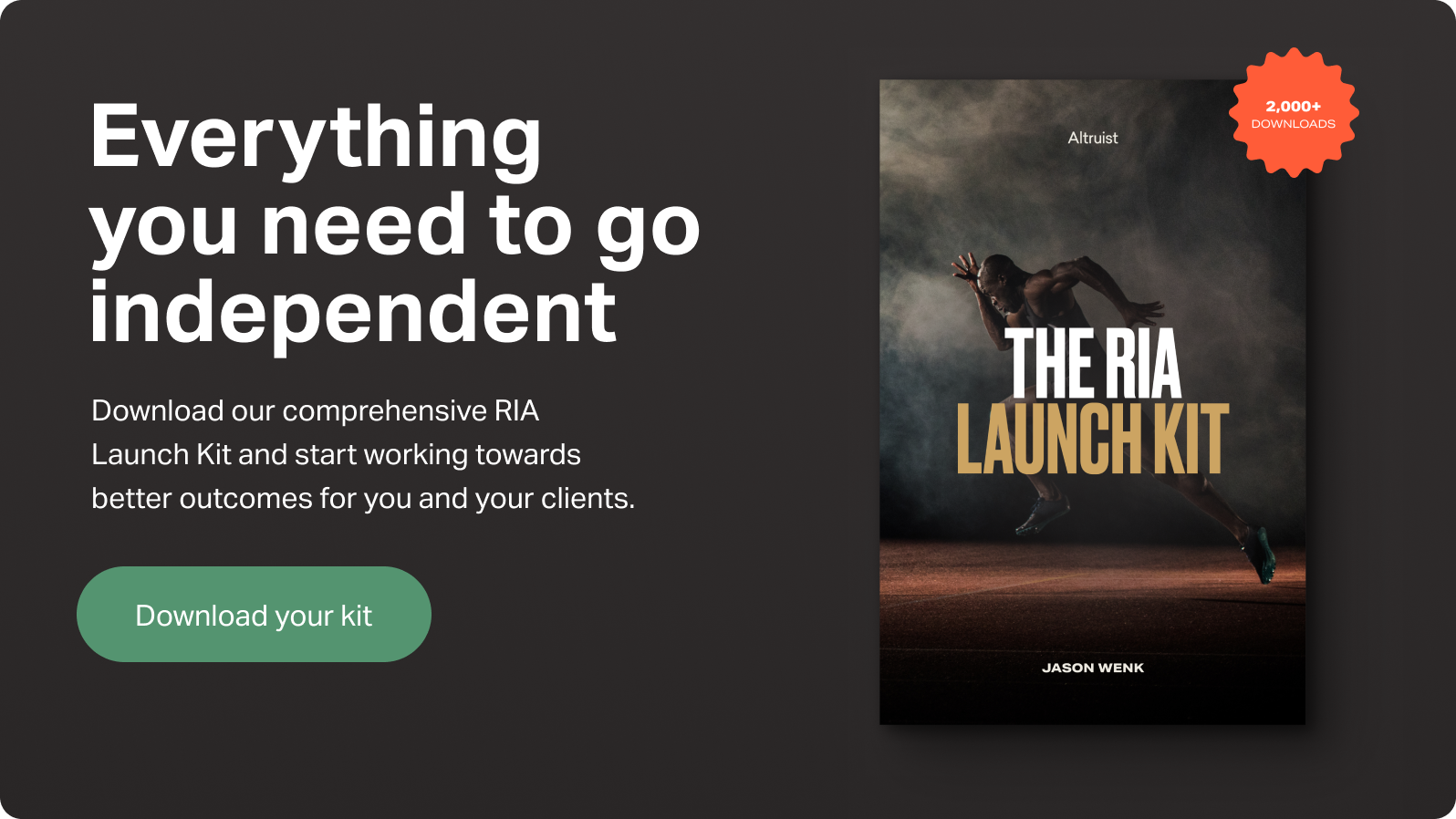When Bjorn Amundson started RBC in 2016, he always hoped he could eventually break away and start his own RIA. It was a question of "how" not "if".
By 2020, he was ready to make the leap to true independence, and by early 2021 he pulled the trigger and was able to take over $60M of AUM with him. Within months of launching his firm, existing clients moved another $30M to him to manage. Here’s how he did it.
Today Bjorn Amundson is a co-owner of Quarry Hill Advisors, a $200M Registered Investment Adviser firm based in St Paul, Minnesota, along with his business partner Kyle Moore. He took a unique path to break away from a bank broker-dealer to becoming a partner in an RIA firm. It took a lot of planning and had one big hiccup, but ultimately resulted in a swift business transfer, a 50% increase in income, and significantly more time control.
"Life is a collection of the best decisions you’ve made—
...the college you went to, the person you marry, choosing your profession; and I’d add making the move to independence for me,” says Bjorn.
How to plan for breaking away and starting an RIA
No two breakaway stories are the same. In Bjorn’s case, he researched and planned his move to independence for nearly 18 months, though he admits he could have done it in less than 6. What took him longer than most is rather than forming an RIA from scratch, he found a business partner who already had an existing RIA. Instead of planning around the formation, regulatory compliance, and ultimately registration, Bjorn and Kyle Moore spent time thinking through the partnership. They had to figure out ownership changes, economics, and respective responsibilities.
Whether you plan to launch your firm from scratch, or take a path like Bjorn and join an existing RIA, here are a few tips he suggests:
1. Hire a compliance consultant.
Bjorn’s biggest fear was being sued by his former employer, and he wanted to be extra careful. However, it turned out that the previous firm was great about the process and didn’t try to stop any clients from following him to his own RIA. Many advisors won’t be so lucky, so starting with proper legal and compliance advice is critical for bank and wirehouse advisors.
2. Interview advisors who’ve left the firm you’re planning to leave.
While many advisors are reluctant to share that they’re considering leaving due to the risk of their current employer finding out, there’s no one better to learn from than those who’ve recently broke away to independence.

3. Be prepared to lose some clients.
When you’re with a bank broker-dealer or wirehouse, the odds of keeping 100% of your clients aren’t high (unlike independent broker-dealer reps, who tend to keep all of their clients). Often this is because your current employer will work hard to keep the client relationships. In Bjorn’s case, about 90% of his clients and AUM followed him to his RIA.
4. Find a great custodian partner, and lean on them.
You’ll want to do your due diligence here and find the right partner because this turned out to be a bit of a mess for Bjorn. He chose a well-known custodian, and they made some promises about covering account closing fees. Unfortunately, this wasn’t in writing, and they ultimately reneged, costing Bjorn $18,000. Lesson learned: get everything in writing.
5. Build your dream tech stack.
Many advisors fear technology, but Bjorn found this to be one of the most exciting parts of his journey to independence. With better technology, Bjorn has been able to create demonstrable value to clients that he couldn’t do before going independent, delivering better client outcomes via tax location, for example.
6. Go digital.
One of the things clients were most excited about when moving to Quarry Hill was an all-digital experience. Being able to open accounts online turned out to be an important selling point more than he’d imagined. In fact, when given the option to meet in person and complete physical paperwork, the vast majority of clients opted for the all-digital approach.
What to watch out for when starting a new RIA
Time matters quite a bit when you leave a bank or wirehouse. After all, there’s a good chance that your former colleagues will be calling your clients and seeking to keep them for themselves as soon as you resign.
In Bjorn’s case, he opted to resign just before Memorial Day weekend. Doing this gave him a 3-day jumpstart to call clients to inform them of his move. Some clients were all in and ready for new account paperwork. A few wanted to meet in person. Most assets came over within 2 months and 90% by 4 months.
Depending on your custodian, however, there can be some challenges. “My custodian prepared bundles of physical paper to help with account opening and ACATs. But when we gave clients an option of paper or digital, almost all chose digital, so we had to re-key all of the information. We used email to keep clients in the loop, which was great, but this was all manual so required a lot of effort.”
Note: Bjorn didn’t use Altruist as his initial RIA custodian.
What are the biggest benefits to having your own RIA?
“Much better workflows for clients. They get a much better level of service,” says Bjorn. “Client experience, technology, and communication have all improved significantly. And ultimately, clients get better results from better tax management in their portfolios.”
Beyond the client benefits, the economics and time control is massively better, per Bjorn. In his case, he went from a 40% payout at the bank to closer to 60% as an RIA (a 50% increase in pre-tax income). Also, he was able to offload many of his previous administrative duties to spend more time on clients.
Are you thinking of starting your own RIA?
If you’re an advisor looking to start your own RIA and have questions about cost, timing, and how to ensure a smooth transition, let us know. Over 1,200 RIAs have chosen Altruist as their all-in-one custody solution. Our transition experts are happy to share best practices in complete confidence to make your move to true independence as successful as possible.

